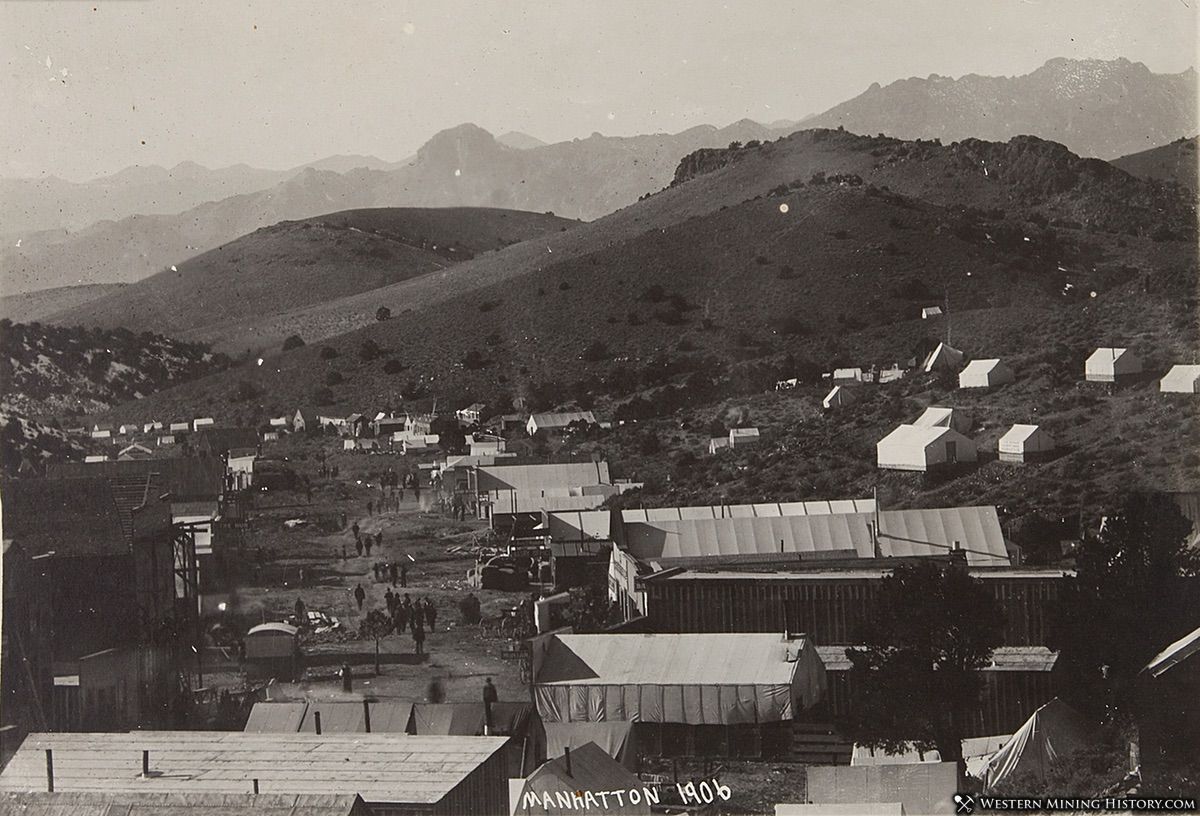Manhattan History
The Manhattan area had several periods of activity starting in the 1860's with early silver discoveries. There isn't much information on the early mining in this district, and mining activity appears to have tapered until the district was all but abandoned in the 1890s.
Gold discoveries after 1900 resulted in a new rush to the area, and the town of Manhattan was established in 1905. By spring of 1906 the word of the district's rich gold deposits got out, and a boom occurred that brought up to 4,000 people to the town in just a matter of weeks.
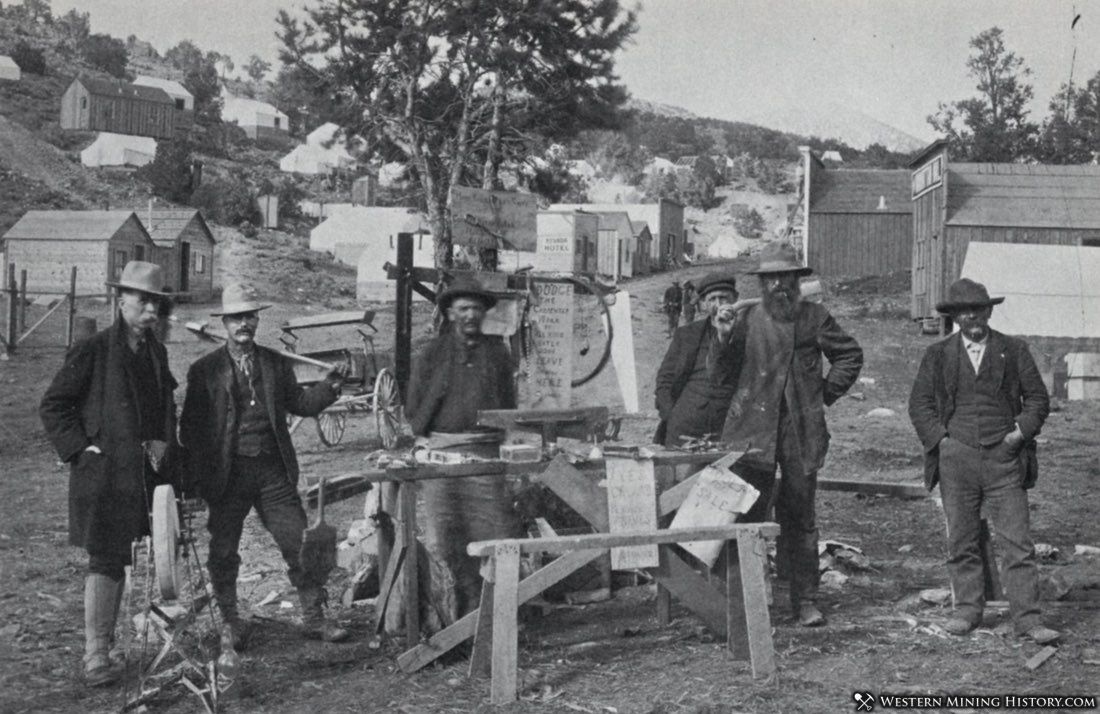
By spring 1906, Manhattan had two newspapers, telegraph and telephone service, electric lights, three banks, and of course numerous saloons.
A March 18, 1906 edition of the Los Angeles Herald describes the excitement at the camp:
The town of Manhattan, which boasted of six tents and fifty souls less than ninety days ago, has now a popoulatlon of 4000, which is being augmented at the rate of 100 a day. The prospector has blazed the way and now the capitalist, the speculator, the merchant and the tradesman follow in his wake, bent on reaping the reward that usually comes to him who is in at the birth of a great gold-mining camp.
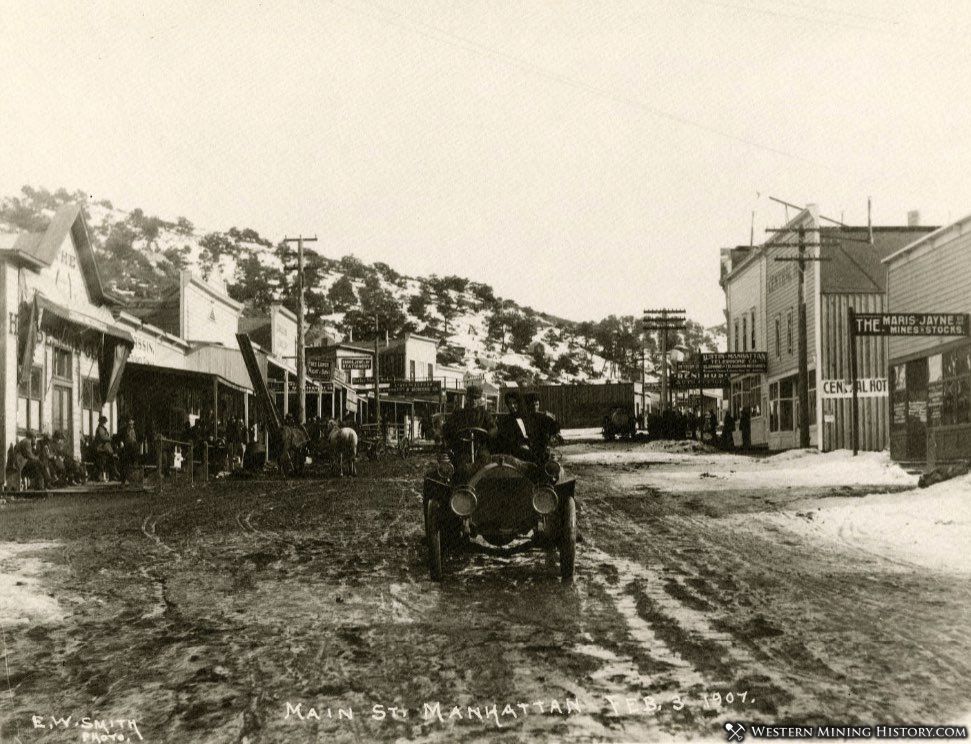
A financial panic in 1906 caused many investors to withdraw their money from Manhattan ventures, and the boom ended as quickly as it started. Thousands of prospectors left the district and only a few hundred remained.
More rich deposits were discovered in the latter half of 1906 and interest in the Manhattan mines was renewed. Another panic in 1907 once again slowed caused a downturn in the development of the district. There was plenty of gold here however, and by 1909 the district, and town, were once again humming with activity.
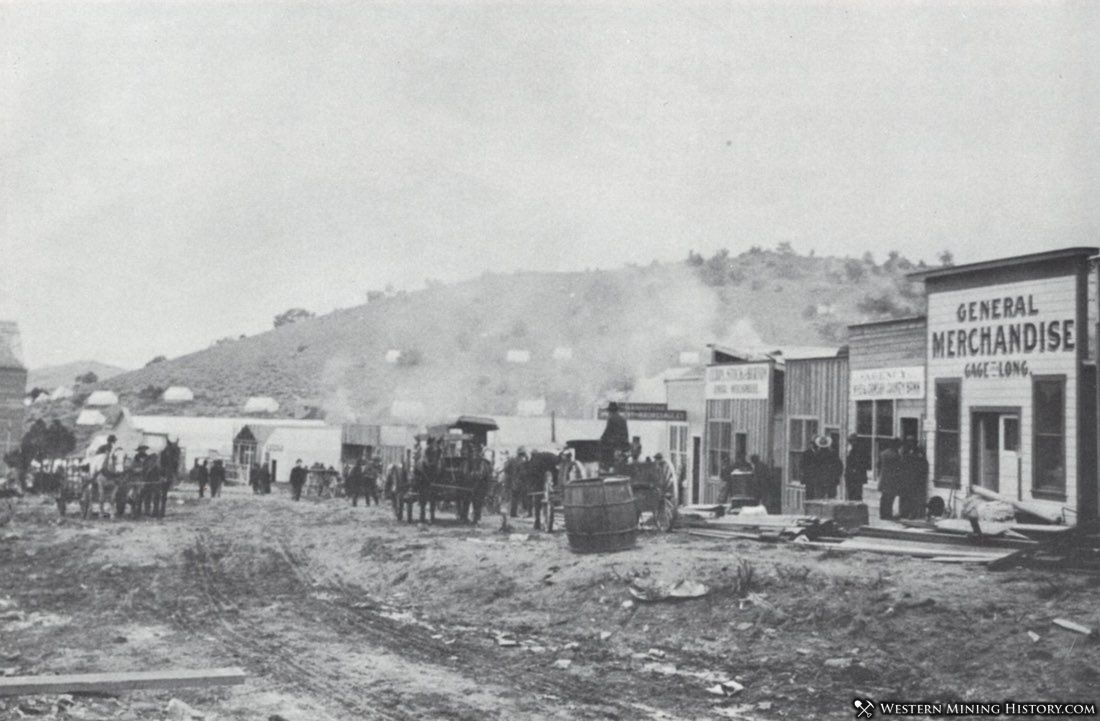
Although outcroppings of gold ore were identified early on, most if the initial mining was of placer gold deposits found in deep bench gravels. Ultimately Manhattan would be credited as the second most productive placer gold district in Nevada.
By the early 1910s, significant lode deposits were located, a 75-ton mill was built, and lode mining started competing with the district's placer mines.
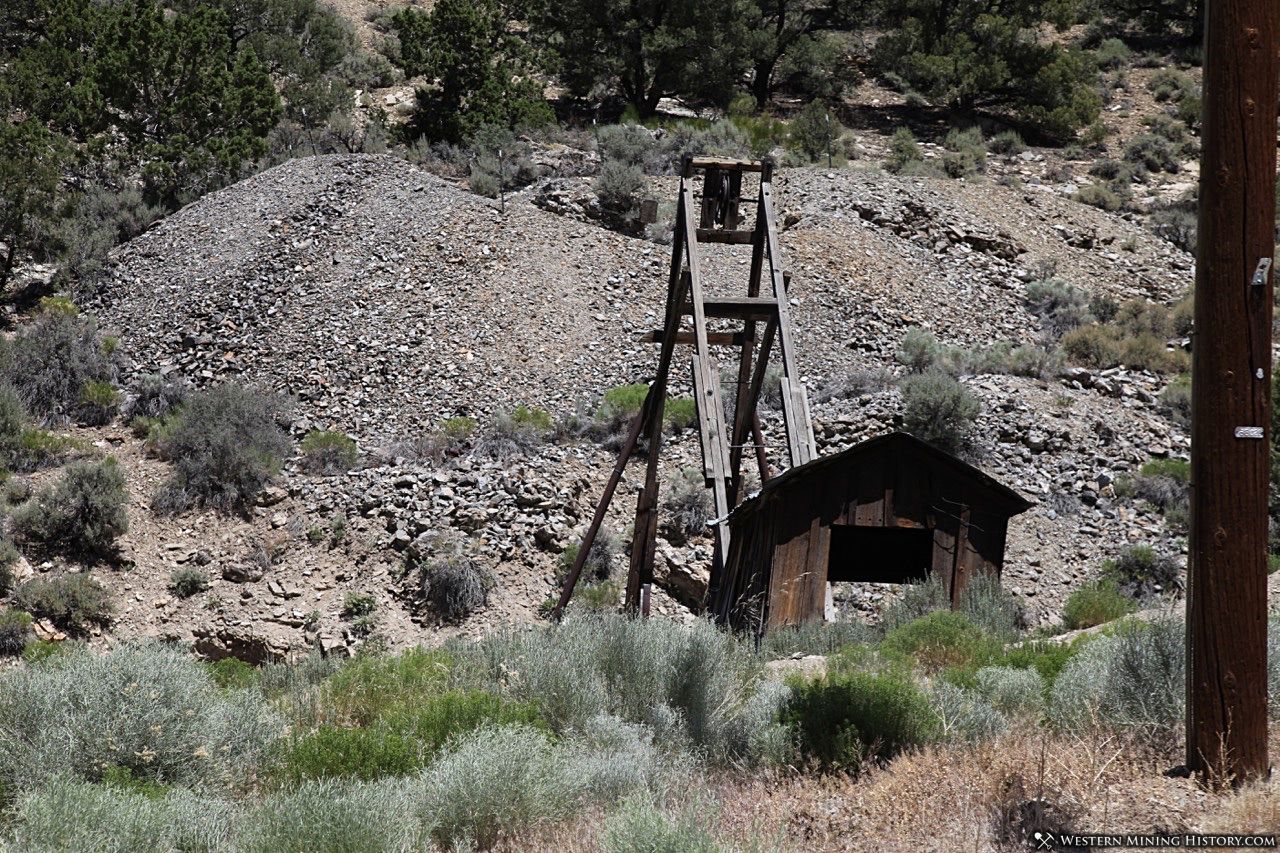
With the mining industry finally reaching stability, Manhattan settled into a town of around 1,000 people during the 1910s. The mines began to wane in the 1920s and the town's most prosperous years came to an end.
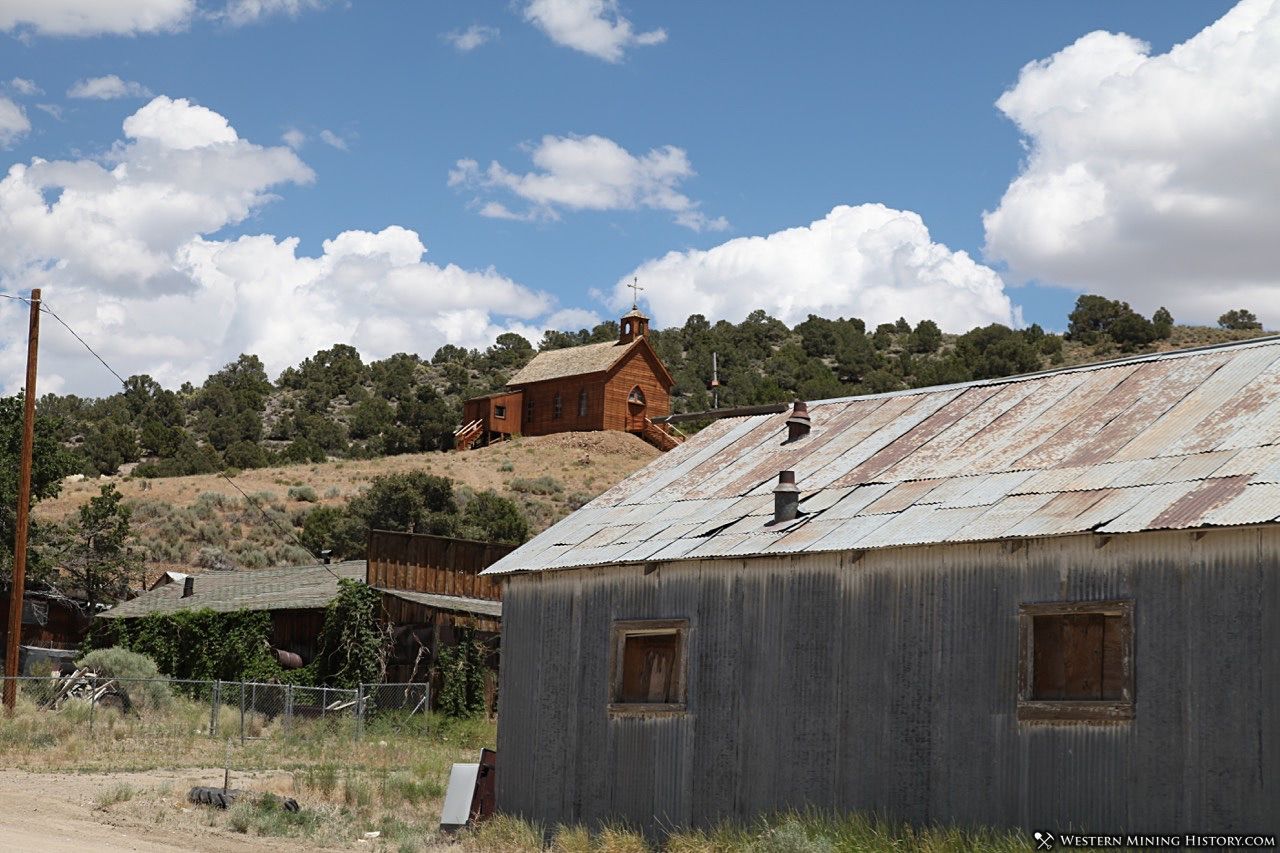
From 1938 to 1946 (the company was given permission to operate at a reduced scale during wartime), the Manhattan Gold Dredging Co operated a floating bucket-line dredge in Manhattan Gulch. The water for the operation was obtained from a 12-mile-long pipeline originating at Peavine. The dredge years are described as the most productive in the district's history.
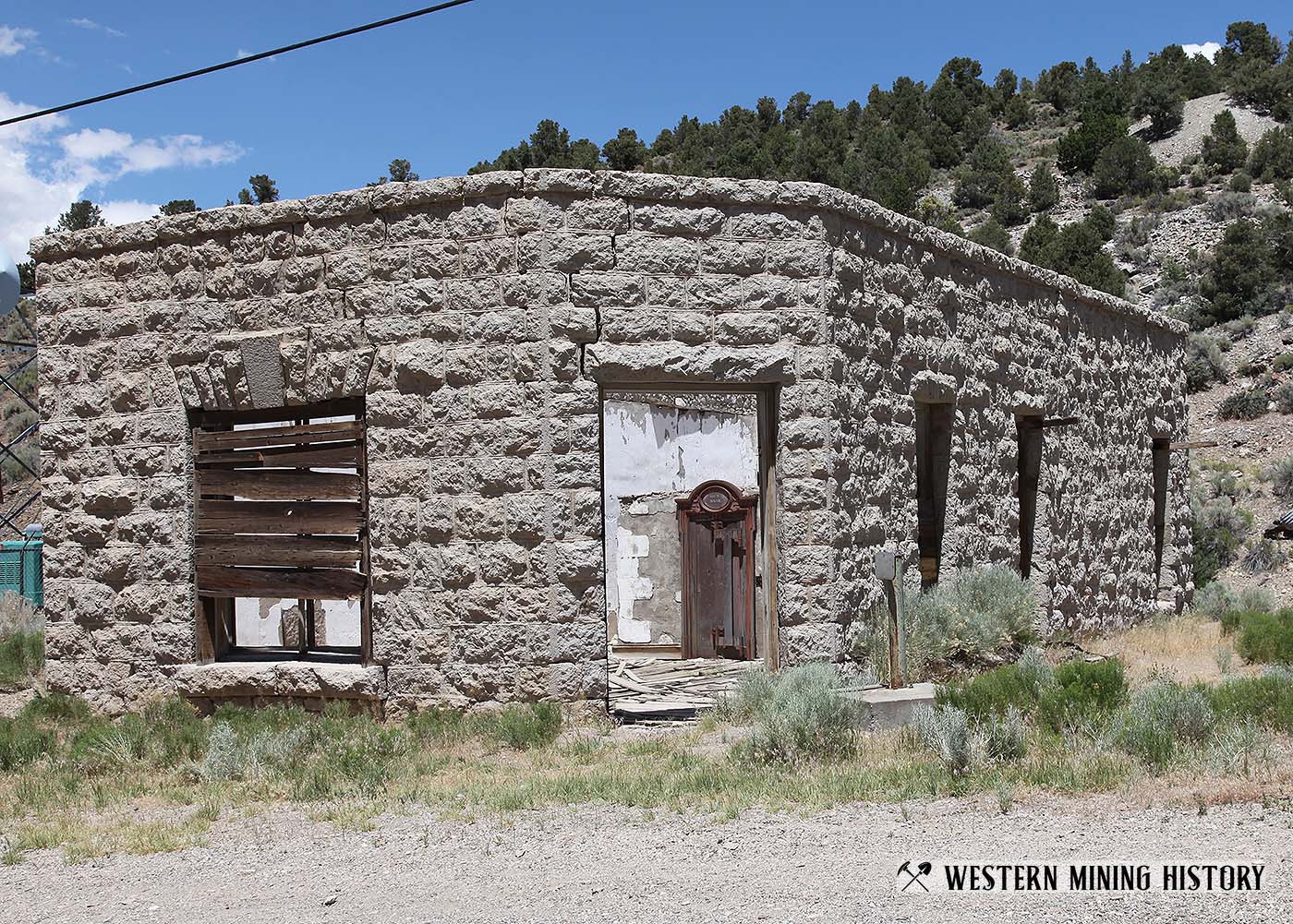
Today Manhattan is a very remote outpost in the desert that still has over hundred residents and two bars to serve thirsty travelers.
Nevada Mining Photos
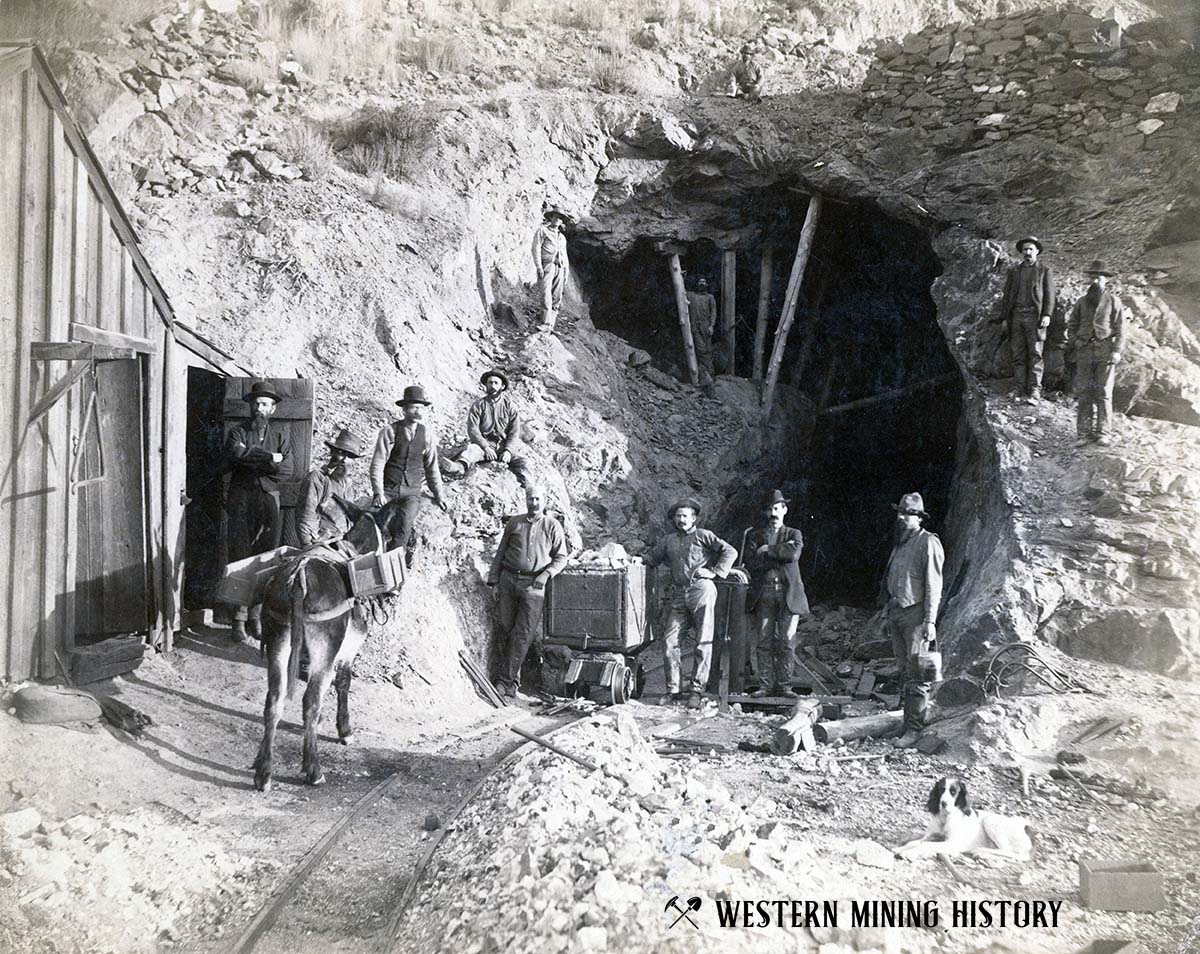
A Collection of Nevada Mining Photos contains numerous examples of Nevada's best historic mining scenes.
Nevada Gold

Nevada has a total of 368 distinct gold districts. Of the of those, just 36 are major producers with production and/or reserves of over 1,000,000 ounces, 49 have production and/or reserves of over 100,000 ounces, with the rest having less than 100,000 ounces. Read more: Gold Districts of Nevada.
